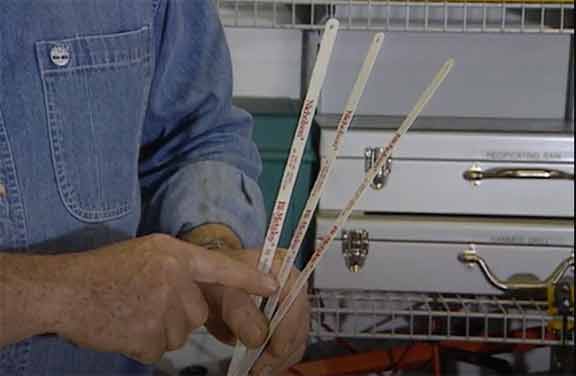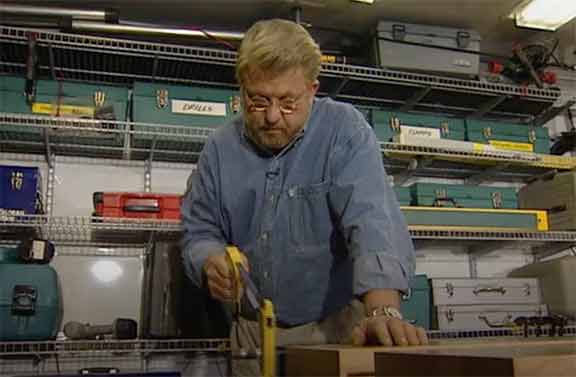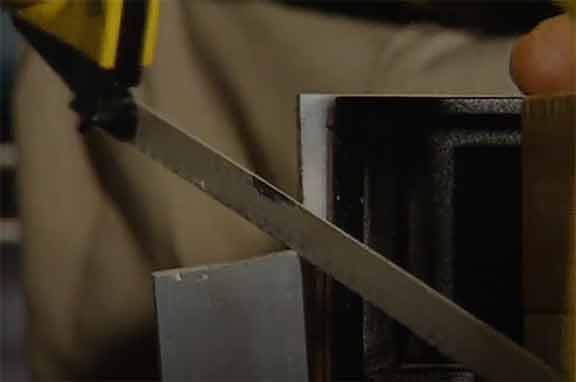How to Choose the Right Hacksaw Blade
A guide for choosing the right hacksaw blade
At first glance, all hacksaw blades may look alike, but there actually is a difference. Which hacksaw blade you choose should depend on which metal you will be cutting. There are heavy, medium, and light-duty jobs and you're going to want to pick the right blade for the job.
This guide explains the difference between hacksaw blades and how to choose the one that is right for you.
What is the difference between hacksaw blades?
The number of teeth per inch differentiates one hacksaw blade from the next. These can vary from three relatively large teeth per inch through to 32. As a general rule, the larger the blade, the lower the number of teeth per inch.
What does TPI mean?
TPI is short for “Tooth Per Inch”. Hacksaw blades are selected by choosing the correct TPI (teeth per inch) for the type of metal that needs to be cut.
Are more teeth better?
The short answer is that it depen ds on the material that you are trying to cut through.
ds on the material that you are trying to cut through.
Generally, blades with more teeth will provide a smoother, finer cut whereas blades with fewer teeth will provide a rougher cut.
For heavy-duty cutting jobs like a steel reinforcing rod or pipe, a lower TPI would provide a coarser and quicker cut. An 18-teeth per inch blade would be the best choice.
For a job that requires medium-duty cutting, like a thin wall electrical conduit, a 24-teeth per inch blade would do a better job.
When cutting light metals like aluminum, a higher TPI would provide a smoother cut. A 32-teeth per inch blade should easily do the trick.
Tips for using a hacksaw
- Secure the blade with the teeth pointing forward.
- Make sure the blade is firmly tensioned.

- Cut using steady strokes, directed away from you. Use the entire length of the blade in each cutting stroke, pressing on the forward stroke, not on the backward stroke.
- Maintain your hacksaw blade by applying oil or lubricant to the blade to cool the blade and prevent overheating when cutting.
- Regularly inspect hacksaw blades for signs of damage including warping or blunting.
- If blades show signs of wear and tear, replace them. Hacksaw blades are meant to be replaced as needed.
As you’re working on your project, check out more workshop techniques for advice and tips.
Blog Articles
Reasons You Should Replace Your Shower Head
Brian had some guests over – and when they left, he discovered that the shower head was broken. In this video, he will show you how easy it is to replace a showerhead. Whether you're upgrading from a basic plastic model to a sleek stainless steel version, or simply need to fix a broken one, the process is easy.
A Space-Saving Laundry Hack
Are you tired of cramped laundry areas and limited workspace? If you have a small space, we have a big solution for you! This DIY project is perfect to maximize your space and create a functional laundry area. Using a folding shelf bracket, you can easily create a countertop that folds up when not in use, saving valuable space. What’s the best part of a folding laundry shelf? You can customize it to fit your unique style and needs.
Can You Clean Your Shower with a Power Tool?
Imagine a shower, sparkling clean, with minimal effort. This innovative tool, when paired with a drill, transforms tedious scrubbing into a satisfying power-cleaning session. Its versatile attachments cater to different surfaces, from large, flat tiles to stubborn grout lines. A quick spray of soapy water, a few minutes of drilling, and voila! Your shower is transformed.





